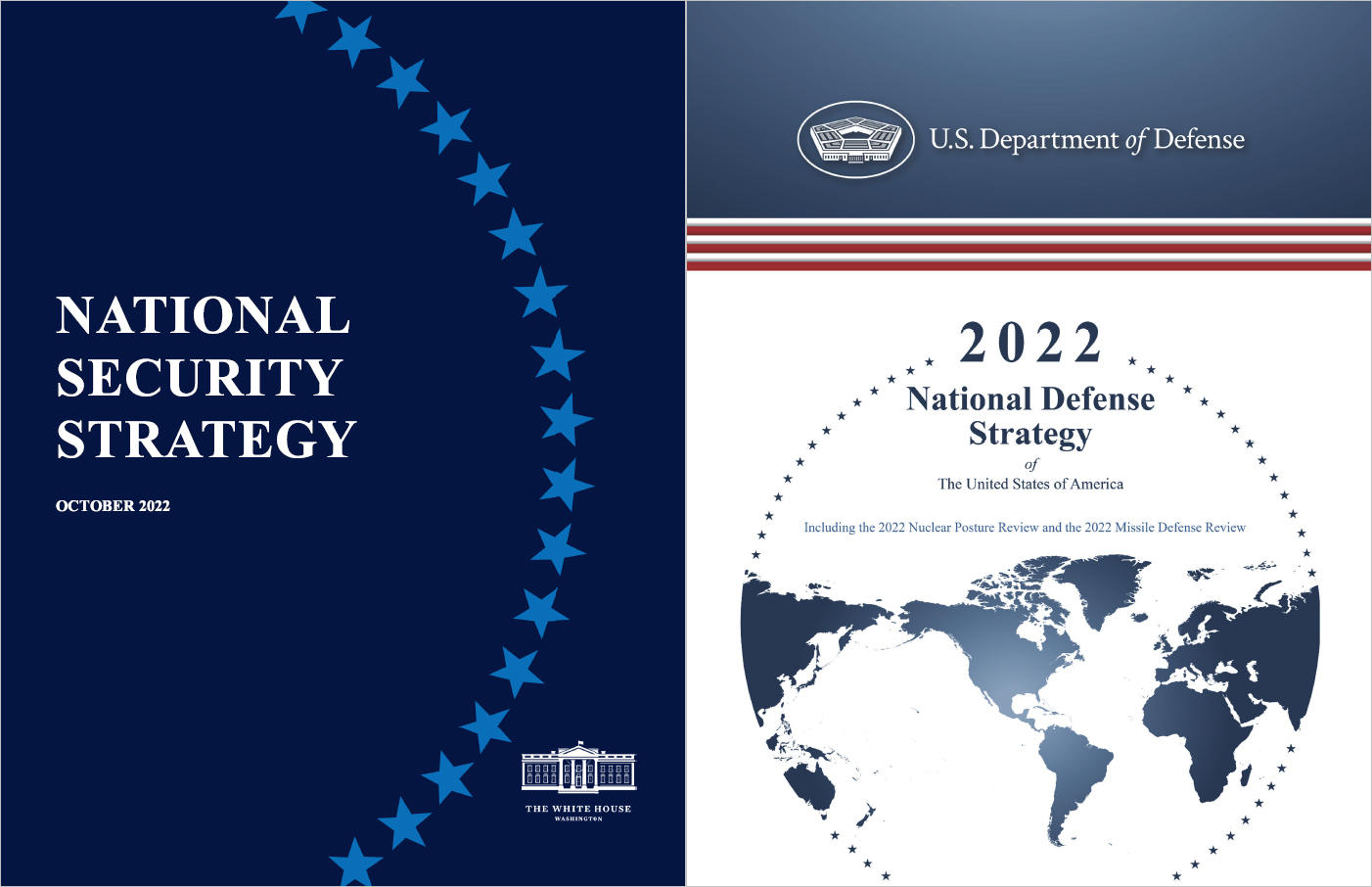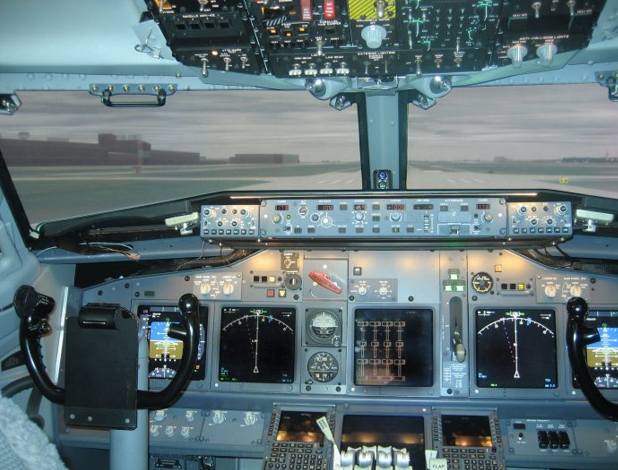

On October 12, the President released a new national security strategy (NSS). Nearly two years into his first term in office and nearly six months from the release of the classified national defense strategy, the new document builds on the interim strategy released in March of 2021. On October 23, the Department of Defense (DOD) also released a new national defense strategy, missile defense strategy, and nuclear posture review that use the NSS as a foundation. These strategies are aspirational, providing general direction from the Administration without the detail needed to fulfill those goals.
The NSS describes the United States at an inflection point and recognizes the pacing challenge China poses, the threat to international order Russia poses, and the proliferation of transnational threats that operate outside of the traditional geopolitical realm. The NSS recognizes geopolitics and transnationalism not as an either/or proposition, but as a combination that is closely interrelated and exacerbated by issues such as climate change, food insecurity, and inflation. The NSS identifies the tension caused by the heightened competition between democracies and autocracies as an opportunity to demonstrate the differences between the two—primarily by preserving the autonomy and rights of less powerful states.
While the military is important, this NSS relies less on military power and more on soft power such as diplomacy and coalition building.
Most nations around the world define their interests in ways that are compatible with ours.
…America will not hesitate to use force when necessary to defend our national interests…but we will do so as the last resort and only when the objectives and mission are clear and achievable, consistent with our values and laws, alongside nonmilitary tools, and the mission is undertaken with the informed consent of the American people.
National Security Strategy,
October 2022
Like past NSS documents, this one recognizes the importance of strengthening democracy around the world and supporting the democratic governance that underpins those democracies. It specifically calls out Russia and China, as non-democracies, willing to wage or prepare for wars of aggression, actively undermine the democratic political processes of other countries, and leverage supply chains for coercion and repression.
From a budgetary standpoint, the NSS advocates strategic public investment as the backbone of a strong industrial and innovation base. Cybersecurity, transportation, broadband, energy infrastructure, a secure supply chain, and improving security defenses in technology products are highlighted as candidates for investment needed to keep the United States competitive. This is consistent with the Biden Administration supply chain strategy outlined in Executive Order 14017, reinforced in the 2022 CHIPS and Science Act, and the Biden Administration’s efforts to expand Defense Production Act authorities.
DOD’s high-level goals are to defend the homeland, deter attacks and aggression against the US, its allies and partners, and to be prepared to fight and win should diplomacy and deterrence fail. As expected, the NSS does not outline the budgetary priorities or resources needed to achieve these objectives. It also fails to outline the specific programs needed to achieve these strategic goals or discuss which programs may be reduced because they don’t contribute to the same degree.
NATIONAL DEFENSE STRATEGY
Released shortly after the NSS, the National Defense Strategy (NDS) was integrated with the Nuclear Posture Review (NPR) and the Missile Defense Review (MDR) to link strategy and resources. The NDS makes it clear, China is the pacing challenge for the Pentagon. The NDS emphasizes collaboration with allies and partners to reinforce deterrence of Russian aggression while “mitigating” threats from Iran, North Korea, and transboundary challenges.
The NDS highlights the United States’ technological edge as its critical military advantage and calls for research and development in directed energy, hypersonics, integrated sensing, cyber, biotechnology, quantum science, advanced materials, and clean-energy technology. The NDS describes DOD as a “fast follower” leveraging commercial market forces in mission-critical technologies such as trusted artificial intelligence (AI) and autonomy, integrated network system-of-systems, microelectronics, space, renewable energy generation and storage, and human-machine interfaces. While the NDS calls for the integration of data, software, and AI efforts and for expediting the delivery of that integration to the warfighter, it is short on policy, process, and budget details on how this integration is to occur.


A view of the newest and most advanced Navy cockpit simulator, the E-6B TACAMO (Take Charge and Move Out) nuclear command and control aircraft. Courtesy photo, Defense Imagery Management Operations Center
- Defending the homeland, paced to the multi-domain threat posed by China
- Deterring strategic attacks against the United States, allies, and partners
- Deterring aggression, with China in the Indo-Pacific and Russia in Europe as priorities
- Building a resilient Joint Force and defense ecosystem
NUCLEAR POSTURE REVIEW
The Nuclear Policy Review (NPR) is straightforward. The purpose of the United States nuclear arsenal is to deter aggression and protect our allies and partners. This can be achieved through a commitment to responsible stewardship of existing nuclear weapons, collaboration with allies and partners, sensible approaches to non-proliferation and arms control, and exploring technological innovations to enhance stability.
The NPR calls for a strengthening of the Nuclear Command, Control, and Communication (NC3) system and stresses the importance of resilient NC3 capabilities for nuclear operations. The NPR defines the five essential functions of NC3 as detection, warning and attack characterization, adaptive nuclear planning, decision-making conferencing, receiving and executing Presidential orders, and enabling the management and direction of forces.
The NPR outlines funding priorities. The nuclear triad remains intact, and the land-based forces rely on full funding for the Sentinel Intercontinental Ballistic Missile (ICBM) as a one-to-one replacement for the Minuteman III. The air-based force programs fund modernization for the B-52H fleet through 2050 and fully fund the B-21 Raider as a replacement for the B-2A Spirit. The Long- Range Standoff weapon will replace the Air-Launched Cruise Missile and the NPR calls for the retirement of the B83-1 gravity bomb. Sea-based nuclear forces funding calls for the construction of at least twelve Columbia-Class submarines to replace the Ohio-class fleet in 2030. It also focuses on near-term investment in the Trident II D5 Strategic Weapon System, the completion of the W88 (nuclear warhead) Alt 370 program, and the continuation of the W93 warhead program. The NPR calls for the cancellation of the nuclear-armed Sea-Launched Cruise Missile program and the continued nuclear certification of the F-35A fighter aircraft to help transition from the F-35E in support of NATO’s nuclear mission.
MISSILE DEFENSE REVIEW
The Missile Defense Review (MDR) focuses on innovation to provide active and passive missile defenses as the foundation of integrated deterrence. The MDR calls for a comprehensive, layered, mobile, and ready capability that will degrade, disrupt, and defeat adversary missiles in all phases of flight. It also calls for integration among the services and interoperability with allies and partners.
The MDR specifically mentions China, Russia, North Korea, and Iran as threats as well as non-state actors. Those threats arise from ballistic, cruise, and hypersonic missile capabilities as well as the newer threat of Uncrewed Aircraft Systems (UAS). DOD’s top priority is defense of the homeland and deterrence of attacks against the homeland. The ground-based mid-course defense (GMD) system provides a visible measure of protection to the U.S. from North Korea and Iran, but is incapable of defeating a large and sophisticated attack from Russia or China. That requires strategic deterrence. The MDR calls for the development of the Next Generation Interceptor (NGI) to augment – and potentially replace – the existing Ground-Based Interceptors (GBI) which are important for homeland missile defense.
The MDR recognizes regional missile defense as critical to protecting and enabling the U.S., its allies, and its partners’ maneuver forces to conduct operations. The MDR outlines the importance of streamlining information and data-sharing process between the U.S., allies, and partners particularly for sensor information. The development of passive defenses against regional hypersonic missile threats is also a priority along with the persistent and resilient sensor network necessary to provide that defense.
The MDR recognizes Integrated Air Missile Defense (IAMD) as critical to homeland defense. IAMD moves beyond platform- specific missile defense to a broad approach that marries all missile defeat capabilities into a comprehensive and combined joint construct. The MDR calls on the acquisition community to explore and exploit adaptive acquisition to ensure timely and cost- effective development, procurement, and sustainment of IAMD systems. The MDR specifically mentions Counter-UAS (C-UAS) as an emerging IAMD challenge.
Like the interim strategy, the NSS and the strategies supporting it continue the shift away from the post 9/11 anti-terror strategy to focus more on the pacing challenge China presents. As a result, we expect less emphasis on special operations as space, missile defense, and seamless communications are prioritized. Addressing the pacing competition requires additional investments in AI, quantum computing, hypersonics, cyber, and unmanned systems.